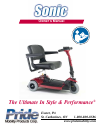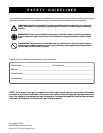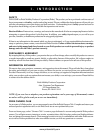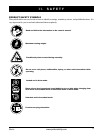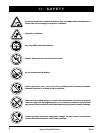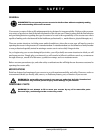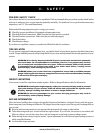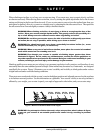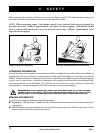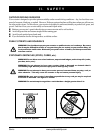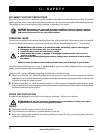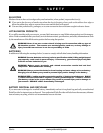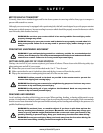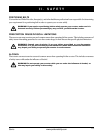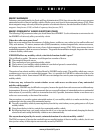
9
Sonic www.pridemobility.com
II. SAFETY
When climbing an incline, try to keep your scooter moving. If you must stop, start up again slowly, and then
accelerate cautiously. When driving down an incline, do so by setting the speed adjustment dial to the slowest
setting and driving in the forward direction only. If your scooter starts to move down the incline faster than you
anticipated or desired, allow it to come to a complete stop by releasing the throttle control lever. Then push the
throttle control lever forward slightly to ensure a safely controlled descent.
WARNING! When climbing an incline, do not zigzag or drive at an angle up the face of the
incline. Drive your scooter straight up the incline. This greatly reduces the possibility of a
tip or a fall. Always exercise extreme caution when negotiating an incline.
WARNING! Do not drive your scooter across the side of an incline or diagonally up or down
an incline; do not stop, if possible, while driving up or down an incline.
WARNING! You should not travel up or down a potentially hazardous incline (i.e., areas
covered with snow, ice, cut grass, or wet leaves).
WARNING! When on any sort of an incline or decline, never place the scooter in freewheel
mode while seated on it or standing next to it.
WARNING! Even though your scooter is capable of climbing slopes greater than those
illustrated in figure 1 do not, under any circumstances, exceed the incline guidelines or
any other specifications presented in this manual. Doing so could cause instability in your
scooter, resulting in personal injury and/or damage to your scooter.
Handicap public access ramps are not subject to government regulation in all countries, and therefore do not
necessarily share the same standard percent of slope. Other inclines may be natural or, if man-made, not designed
specifically for scooters. Figure 1 illustrates your scooters stability and its ability to climb grades under various
weight loads and under controlled testing conditions.
These tests were conducted with the scooters seat in the highest position and adjusted rearward on the seat base
to its farthest rearward position. Use this information as a guideline. Your scooters ability to travel up inclines is
affected by your weight, your scooters speed, your angle of approach to the incline, and your scooter setup.
WARNING! Any attempt to climb or descend a slope steeper than what is shown in figure
1 may put your scooter in an unstable position and cause it to tip, resulting in personal
injury.
250 lbs.
8˚/14.1%
300 lbs.
6˚/10.5%
200 lbs.
9˚/18.8%
150 lbs.
9˚/18.8%
Figure 1. Maximum Recommended Incline Angles



